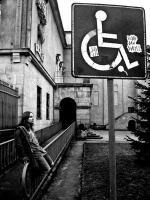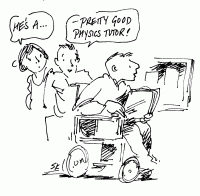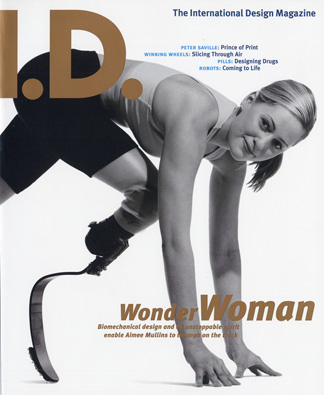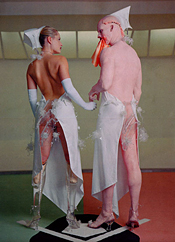Serendip is an independent site partnering with faculty at multiple colleges and universities around the world. Happy exploring!
Notes toward Day 15: On Seeing (and Not Seeing) Disability
Day 15: On Seeing (and Not Seeing) Disability
![]()
Kickboxing, posted by kjmason
from “Motion Disabled” by Simon McKeown
http://sweetperdition.files.wordpress.com/2009/01/kickboxing.jpg
I. Course-keeping
naming
sign-up sheet for conferences
essays now due Sunday, Nov.1 at 5 PM, unless your conference is next week, in which case it's due two days after we meet
great images (as above) showing up in the forum; what about music, too?
send Anne songs that occur to you in relation to class topics?
(trying to keep that popular culture thread going along w/ all else....!)
events this week:
7:30 pm tonight in Ely Room, Wyndham: Carol Rogers,
"On the Front Lines: A Career in the Philadelphia Department of Public Health"
Carol has been a member of the Philadelphia Women's Health Collective, the Coalition of Labor Union Women (CLUW), the Philadelphia Reproductive Rights Organization, Women Against Sterilization Abuse, and has served on the boards of the Greater Philadelphia Women's Medical Fund, the Elizabeth Blackwell Health Center for Women, AFSCME Local 2187 Executive Board, and the Maternity Care Coalition.
4:30 pm tomorrow in Thomas 224: Frances Negrón-Muntaner,
"'Mariconerias' of State: Mariela Castro, Homosexuals, and Cuban Politics":
"homophobia has now given away to homophilia...as the result of a process of
political 'transformism' through which the Cuban state attempts to modernize itself"
by Fri, 10/30 contact lrescorla for admission to master class in screenplay writing
to be held 4-6 p.m. on Thursday, November 5, 2009, led by Sarah Schenck,
writer and directoor of "Slippery Slope" (comedy about feminism and porn)
For Thursday's class
READ ALL OF ONE OF KATE BORNSTEIN'S BOOKS:
Gender Outlaw (1995), My Gender Workbook (1997) or Hello Cruel World (2006).
Come to class ready to teach it to those who haven't yet read it:
--in what ways do Kate's books pick up on (challenge, extend?) our
recent conversations about disability, sex and gender?
--what's important, what problematic in these texts?
--what have you learned from reading them?
--what do you want to understand better?
--what do you want to ask Kate Bornstein when she comes next week,
--what do you want to tell Kate?
(these are also the forum questions this week....)
II. Lynda Barry and Drawing the Line: Comics and the Art of Social Transformation
![]()
Barry: all about the image
art/the image as having a biological function
making or interpreting an image as drawing on the unconscious as well as the conscious mind
story of treatment for phantom limb pain
other aspects of Lynda Barry's talk and workshop or other portion of the symposium you'd like to discuss?
III. Visibility and Invisibility
" In representing disability, the visualization of impairment, never the functional experience of it, defines the category of disability" (346).
Revisiting Riva Lehrer's Self-Portrait: what does the white space DO?
Invisible disability: what kinds of disability are invisible?
Why do we need a visual marker, visual "proof" of disability or other embodied identities?
 |
 |

"Understanding how images create and recreate disability as a system of exclusions and prejudices moves us toward the process of dismantling the institutional, attitudinal, legislative, and architectural barriers that keep people with disabilities from full participation in the society" (372)
Four visual rhetorics (from "Seeing the Disabled")
1) the wondrous
2) the sentimental
3) the exotic
4) the realistic
Can you think of others? Do these rhetorics operate in narrative as well as visual representations?
 |
||
 |
photos of Aimee Mullins
IV. Dreaming your essays and an audience
OMG I have no idea what I'm writing about. . .
1) What is the seed of your essay: the image or idea, the knotty problem or unanswered question from which it begins? Stay with the energy and aliveness of this seed.
2) What form(s) might be generative as you grow the essay? How might you play/work with form?
3) How are you working the junctures or disjunctures between sex, gender, and disability? Are you drawing on analogical, additive, hierarchical, and/or intersectional modes of thinking? Others?
4) Make a representation, in words and/or images, of the seed of your essay


